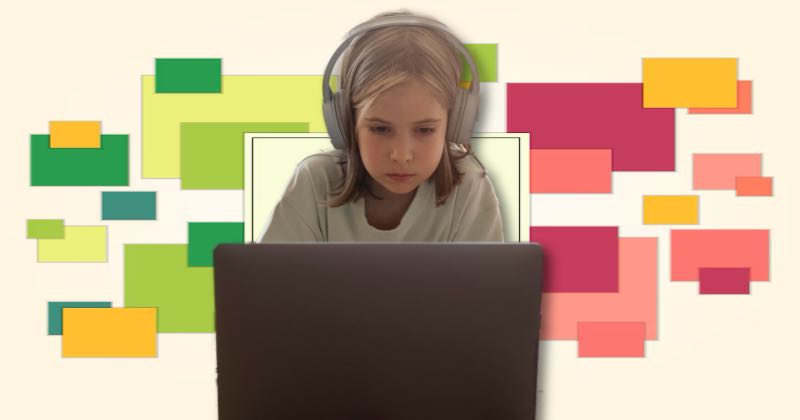
Why Your Child Might Be Addicted to Screens
Excessive screen time is a growing concern among parents, and it’s not just about how long kids are glued to their devices—it’s about why. From brain chemistry to learned behavior, several factors combine to make screens difficult for children to resist.
What Drives Screen Addiction in Children?
The Role of Dopamine and Instant Rewards
Apps, games, and social platforms are designed to be addictive. Every notification, level-up, or autoplay video triggers dopamine, the brain’s reward chemical. This immediate pleasure loop can be powerful, especially for young brains still developing impulse control.
Over time, children begin to associate screens with comfort, excitement, and validation—emotions they may not find as easily in the offline world.
Boredom and Lack of Stimulation
In many cases, screens become a default solution for boredom. If a child doesn’t have access to engaging, real-world activities, it’s only natural they’ll turn to the instant entertainment of a screen. And the more this pattern repeats, the harder it becomes to break.
Unstructured time, once a valuable space for creativity, is now filled with passive scrolling or tapping. Without alternatives like outdoor play, crafts, or free play with others, screen time quickly dominates.
Parental Influence and Digital Modeling
Children mirror what they see. If parents frequently use devices during meals, conversations, or quiet time, kids absorb that behavior as normal. They grow up believing screen use is part of every activity—even those that once didn’t involve technology.
The digital habits of adults directly impact how children perceive their own relationship with technology.

How Screen Overuse Affects Child Development
Cognitive Development Concerns
Prolonged screen time can negatively affect how children learn and think. Studies suggest that excessive exposure to fast-paced, constantly changing digital content may shorten attention spans and reduce the brain’s ability to concentrate.
Children who consume more entertainment media tend to have lower problem-solving skills and may struggle with memory retention, especially when passive viewing replaces active learning.
Emotional and Social Impacts
Too much screen time also limits opportunities for in-person social interaction. Children learn empathy and emotional regulation by observing facial expressions, body language, and tone of voice—skills that don’t develop through text messages or video games.
Over time, this can result in increased social anxiety, reduced emotional intelligence, and difficulty resolving conflict in real-life situations.
Physical Health and Sleep Disruption
The physical consequences of screen overuse are real. Many children experience digital eye strain, poor posture, and decreased physical activity, which can lead to obesity or motor development delays.
Sleep patterns are especially vulnerable. Blue light from screens suppresses melatonin, the hormone that helps regulate sleep, making it harder for kids to fall asleep and stay asleep—especially if they use devices right before bed.
What You Can Do as a Parent
Building Healthy Boundaries Without Going Cold Turkey
Managing screen time doesn’t require banning technology altogether. Instead, focus on setting consistent boundaries. This might mean creating device-free times (like dinner or bedtime) and locations (like bedrooms), as well as limiting screen use to certain hours or after specific tasks.
The key is consistency and communication—let your child know why the limits exist and involve them in creating healthy routines.
Offer Meaningful Alternatives to Screens
Children are more likely to reduce their screen time when they’re offered something equally engaging. Encourage activities that spark curiosity and movement, such as sports, crafts, books, or family outings. These alternatives don’t just replace screen time—they enrich your child’s development in ways technology can’t.
Be the Example They Need
Perhaps the most effective way to change your child’s behavior is to model the habits you want to see. Reducing your own screen time during family moments, turning off notifications during meals, and choosing offline activities over digital ones sends a clear message about balance and intentionality.
When It’s Time to Seek Help
If your child reacts with extreme frustration when limits are set, begins to show signs of withdrawal, or experiences a significant drop in academic or social functioning, it may be time to consult a pediatrician or child psychologist. Screen addiction can sometimes mask deeper issues, such as anxiety or ADHD, that require professional support.

Final Thoughts
Technology is an integral part of modern childhood, but that doesn’t mean it should dominate it. Helping your child build a healthy relationship with screens requires intention, balance, and patience.
With structure, support, and realistic alternatives, screen time can become just one part of a rich, well-rounded life—not the center of it.
For additional tools, consider using apps like Google Family Link to help manage device use in a transparent and age-appropriate way.



